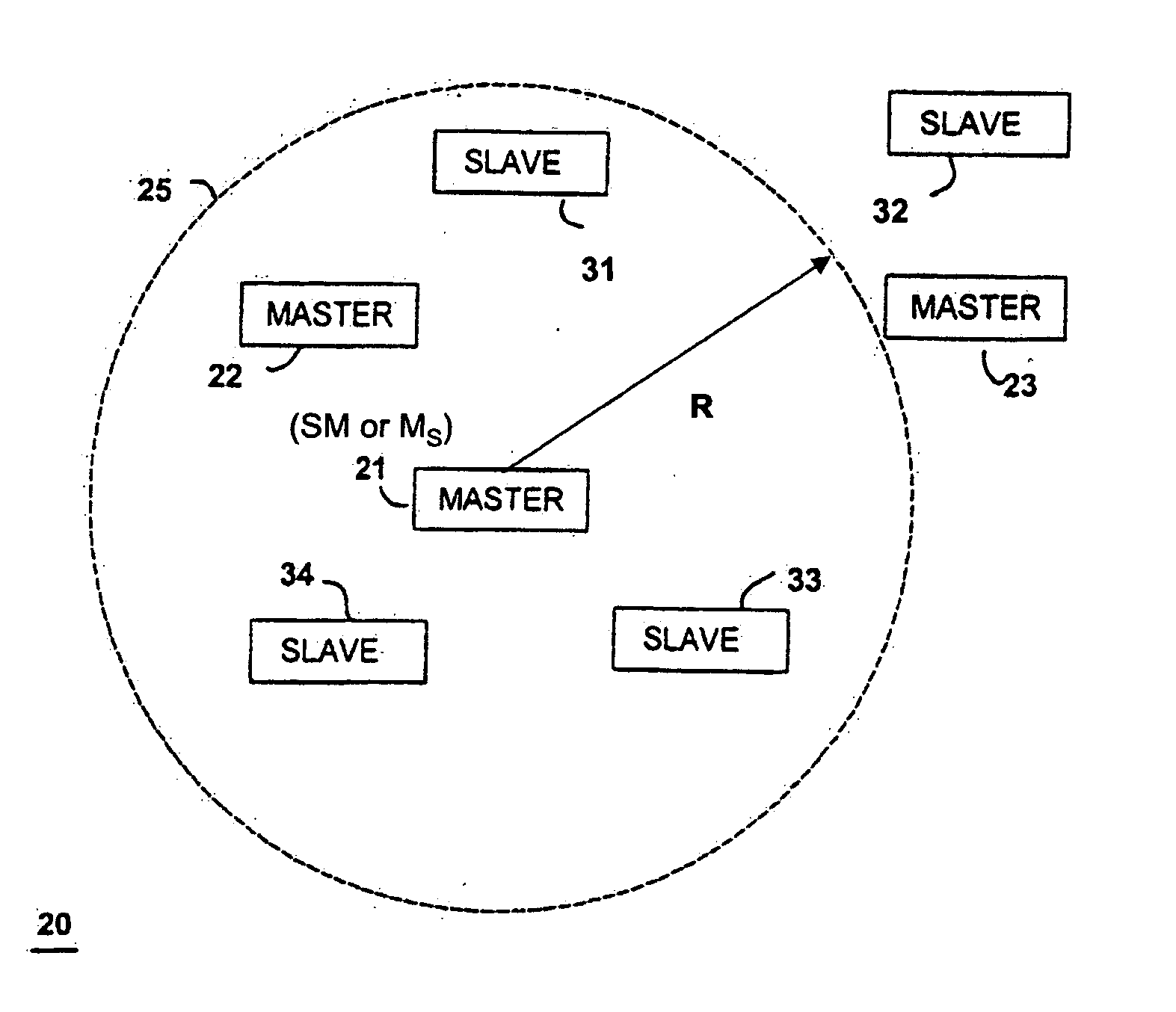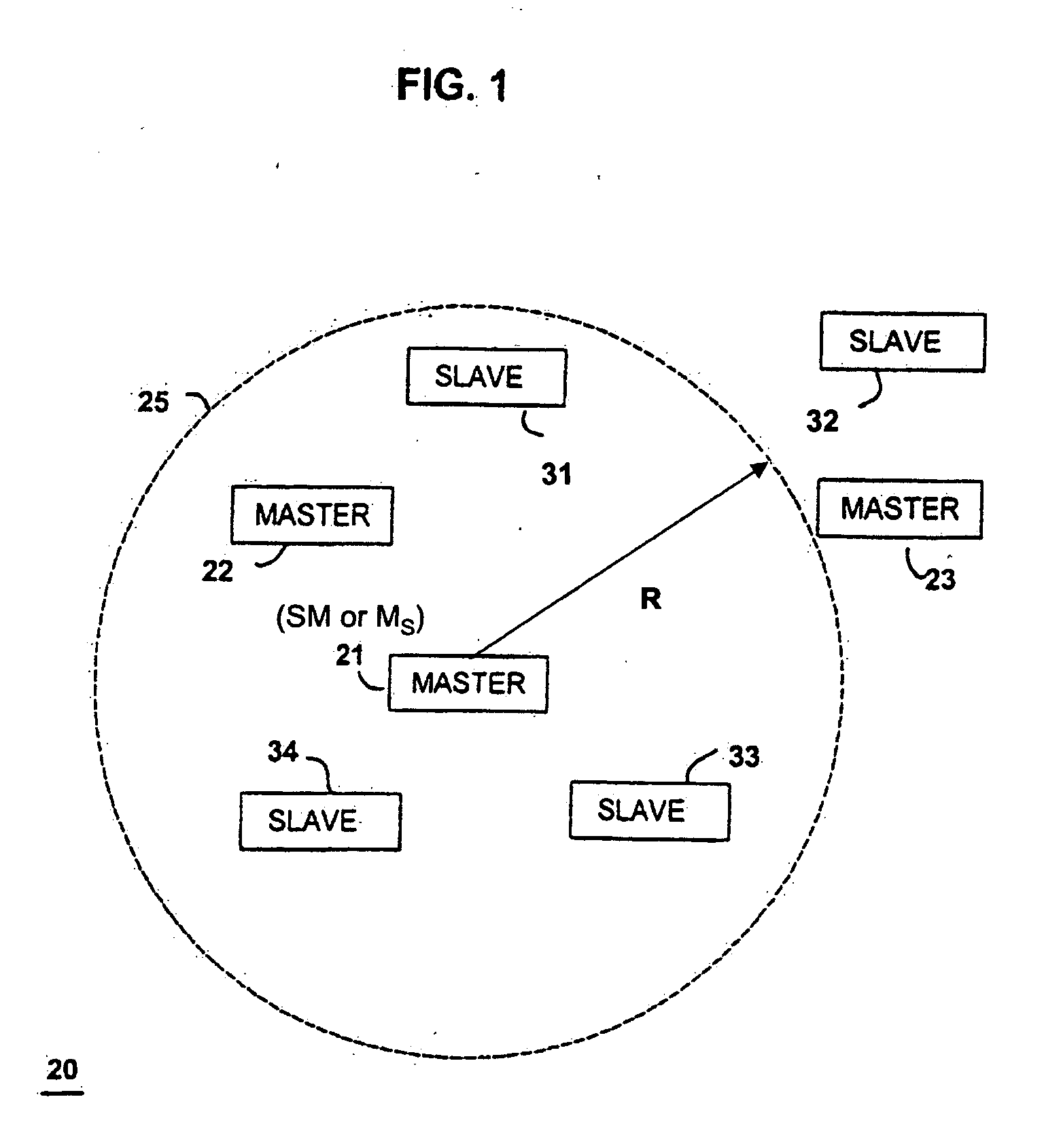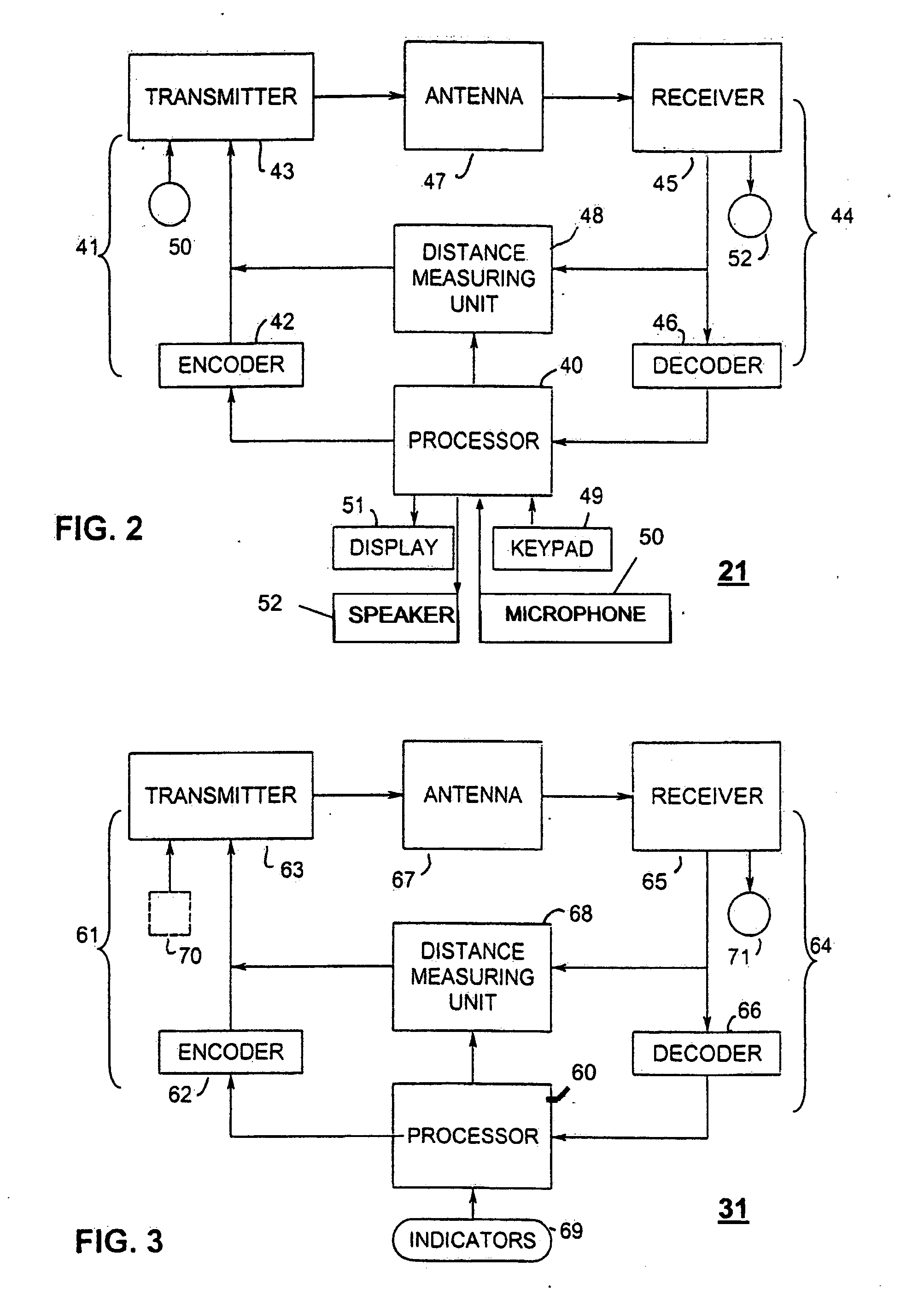Method and system for finding
a technology of locator and directional antenna, applied in the direction of electric signalling details, using reradiation, instruments, etc., can solve the problems of reducing the directional capability of directional antennas, preventing coordinated searches, and relatively high frequency bands that are not suitable for searching, so as to simplify virtual triangulation and minimize user-device interaction
- Summary
- Abstract
- Description
- Claims
- Application Information
AI Technical Summary
Benefits of technology
Problems solved by technology
Method used
Image
Examples
Embodiment Construction
[0062] Referring to FIG. 1, a tracking and locating system 20 is illustrated according to an exemplary embodiment of the present invention for finding, locating, monitoring and or tracking of at least one target (T) that can be animate or inanimate, or both. The tracking and locating system 20 and method is described herein in several exemplary embodiments that have application for finding the location of a target T and or for allowing tracking of numerous targets T in different contexts. The method and system of the present invention is not limited to such enumerated exemplary embodiments in the different contexts as it should be appreciated that techniques and devices of the tracking and locating system 20 can be used for tracking and locating other animate things and or subjects such as pets and other animals. The method, techniques and tracking and locating system 20 can be used in locating inanimate things and subjects such as keys, eyeglasses, wallets, purses, portable telepho...
PUM
 Login to View More
Login to View More Abstract
Description
Claims
Application Information
 Login to View More
Login to View More - R&D
- Intellectual Property
- Life Sciences
- Materials
- Tech Scout
- Unparalleled Data Quality
- Higher Quality Content
- 60% Fewer Hallucinations
Browse by: Latest US Patents, China's latest patents, Technical Efficacy Thesaurus, Application Domain, Technology Topic, Popular Technical Reports.
© 2025 PatSnap. All rights reserved.Legal|Privacy policy|Modern Slavery Act Transparency Statement|Sitemap|About US| Contact US: help@patsnap.com



